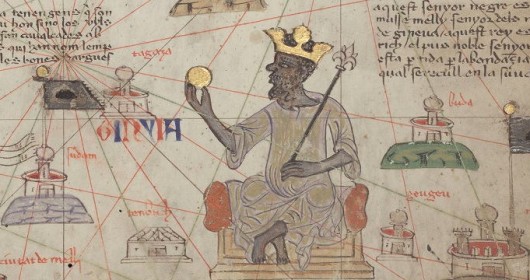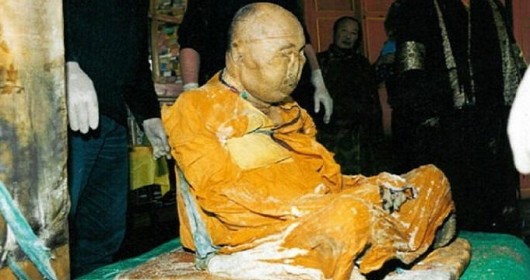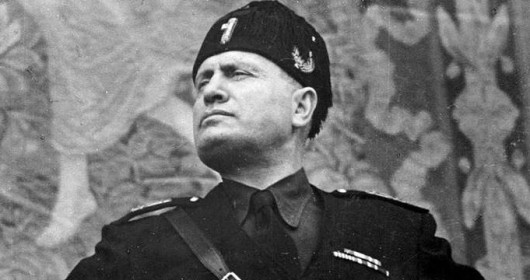The Inspiration Behind Classic Tale Moby Dick

Photo Credit: http://www.travelthruhistory.tv/the-essex-whale-moby-dick/
‘Moby-Dick’ is a quintessential novel by American writer Herman Melville which revolves around Captain Ahab who was wrathful in his pursuit of a huge whale. The captain lost his leg because of the whale, Moby Dick on his previous voyage. Hence began a tale of vengeance where he wanted to slaughter the White whale, even if he had to lose everything including his own life in the bargain.
This fictional story, written during the American Renaissance, is well known for its elements of Romanticism. This ground-breaking author wrote this novel without actually visiting the island Nantucket, a tiny, remote landmass off Cape Cod. The story is based on Melville’s real life experience on a ship ‘Acushnet’. Apart from his own experiences on the whaler he got his sources from 2 real life stories; one was the sinking of ‘Essex’ and the other was the killing of a sperm whale, Mocha Dick. After ‘Moby-Dick’ was released in the year 1851, he decided to visit Nantucket. The happenings that motivated Herman to pen down this book are inspired by real-life events that are bone chilling in the true sense of the word.
Melville took a steamer in the year 1852 to visit Massachusetts and like any other vacationer he met the authorities of the area, ate food with them and enjoyed the beautiful scenery that he had only envisioned in his dreams. He also met Captain George Pollard Jr. who was in charge of the ‘Essex’. It was a ship that met with ill-fate in the year 1820, when a sperm whale got into a brawl with the vessel, resulting in its sinking.
The 29-year-old managed to survive the unfortunate incident and returned only to captain another ship called the ‘Two Brothers’. Regrettably two years later, this too did not have a fate different from the earlier vessel, since it broke down on a coral reef. After this Pollard was considered inauspicious and was never allowed to captain a ship ever again. Ultimately he was driven to a situation where he began working as a watchman for the village.
A short sketch of Pollard and his experience with the destructive whale sinking the ‘Essex’ has also been mentioned in the legendary novel. The novelist knew that the ill-fated captain’s experiences did not end with seeing his ship sink but he had gone through a lot more pain and dreadful moments. “To the islanders he was a nobody,” Herman wrote, “to me, the most impressive man, tho’ wholly unassuming, even humble—that I ever encountered.”
Pollard had described the entire appalling experiences of physical pain, the traumatic end of some of the crew, extreme hunger and eventual cannibalism, during dinner to other fellow captains and a missionary called George Bennet. The captain told the tale of enduring 92 days of being directly under a merciless sun and surviving the sleepless nights. The unlucky captain, along with some of his crew, had even eaten the flesh of his own cousin, Owen Coffin to survive. “But I can tell you no more—my head is on fire at the recollection,” Pollard told Bennet. “I hardly know what I say.” Bennet, untouched by the horror of it all, saw the narration only as a declaration of Pollard’s guilt.
This is the story of the extreme misfortune which fell upon Captain Pollack and his crew, so horrific, that Herman thought was best left unsaid in his novel.
The story starts with the ship ‘Essex’, which was in for a huge predicament, only two days after it left the port of Nantucket on August 12th, 1819. The journey was intended to be for a good two-and-a-half years of whaling, but fate had other plans. The vessel was hit by a huge gust of wind that broke the top part of its sail which nearly resulted in it sinking. But the captain decided to continue, and reached Cape Horn on January 1820. Unfortunately the sea was devoid of whales; so they continued their voyage, this time heading towards the South Pacific, far from any land, where they hoped for good whaling.
En route, ‘Essex’ stopped for a while at Charles Island in the Galapagos to restock their supplies. They managed to gather a whopping sixty, 100-pound tortoises. But here too misfortune, like a shadow, did not leave them. Helmsman Thomas Chappel, a notorious crew member, decided to light a fire as a practical joke, but soon things went out of control. With the ship set ablaze, people were running helter-skelter to save themselves.
Thankfully, the ship and all of the crew were spared. So intense was the fire that even after a day of sailing, the flames on the island could be seen on the horizon. The island remained besmirched and burnt many years after the ill-fated incident, and resulted in the extinction of the Floreana Tortoise and the Floreana Mockingbird.

Photo Credit: http://www.pastpin.com/search?page=37926&content=&type=&sort=interestingness-desc&taken_after=&taken_before=&submit=
On November 1820, ‘Essex’, it seemed, had shaken off its bad luck as it had experienced many months of good fortune. But it seemed that misfortune was playing a joke so much so that after lulling the ship and its crew into complacency, it was laughing with an evil hysterical glee.
Misfortune was about to unleash, the whales were proving to be plentiful and the boats from Essex had harpooned cetaceans, which were pulling the vessels all the way to the horizon. The crew called this process “Nantucket sleigh rides.” The photo of the man above is Owen Chase who was the office second in command of the ‘Essex’. This 23-year-old stayed on the ship while the captain went out whaling. He saw a huge 85-feet long whale, heading straight for the vessel. Owen recalls that the speed of the cetacean was about three knots; he says that the whale was “Coming down for us at great celerity.” The giant creature had hit the vessel with a gigantic force that made Chase describe it as, “such an appalling and tremendous jar, as nearly threw us all on our faces”.
The furious animal went beneath ‘Essex’ and was tossing and turning with what seemed a determined intent to capsize the ship. The first mate recalls the ghastly incident and says, “I could distinctly see him smite his jaws together, as if distracted with rage and fury.” Soon the destructive mammal vanished and peace returned, but it was only the tormenting calm before a storm. While the crew members were busy repairing the damage caused by the violent cetacean, a crew member spotted the whale coming at them again, this time at a faster speed of about six knots. He shouted out saying, “Here he is—he is making for us again.”
This time the whale hit the bow under the cathead with a massive force and then vanished, never to be seen again—the decisive damage was done. There was a hole in the bow and the ship was filling up with water. Before the ship could sink, the crew members filled the life boats with all essentials like food and route-finding tools before lowering them.
From his whale boat, Pollard saw his ‘Essex’ coming to an end. When he reached the sinking ship, in a dejected tone he asked, “My God, Mr. Chase, what is the matter?”
“We have been stove by a whale,” replied Owen Chase.
While the crew was saddened by the tragedy that had taken place, the captain was lost and his emotions left him paralyzed. The first mate says he realized that some people “had no idea of the extent of their deplorable situation.”
In this challenging situation Pollard, being the captain of the ship, took charge and distributed the crew of 20 men on 3 boats. He decided that they should head towards Marquesas and the Society Islands since they were the closest from their current location. The first mate and his men feared that these islands were tenanted by cannibals. He suggested that even though the distance would be a lot more, it would be better for them to head towards the South, since it would widen the probability of their survival. Pollard agreed and thus began the final desperate, and gruesome, fight for life.
Even though the food had been soaked in saltwater, they began eating their rations. This increased their need for water and soon everyone was dehydrated. In addition to the scorching sun, the captain’s boat was attacked by a killer whale. They survived this attack, and soon the crew members were living on their last reserves. A short time after the killer whale attack, they noticed an abandoned, barren island called Henderson Island on which they took temporary refuge.

Photo Credit: http://www.travelthruhistory.tv/the-essex-whale-moby-dick/
It was mid-December, when they decided to leave Henderson Island and risk the sea voyage again, in a desperate attempt to get home. Three crew members had enough of the vicious sea and decided to stay on the island to test their fate. A few weeks into their voyage, the leviathans again became a threat to human lives, especially at night. However, they managed to survive and by next month, all the rations were over, and people were tired of fighting for survival.
One man who was traveling on Owen’s boat went berserk. He stood up and commanded for a dinner napkin and then fell down into the “most horrid and frightful convulsions.” He died soon after and “Humanity must shudder at the dreadful recital” of what happened after that, Chase wrote. The men on the boat were starved to such an extent that they, “separated limbs from his body, and cut all the flesh from the bones; after which, we opened the body, took out the heart, and then closed it again—sewed it up as decently as we could, and committed it to the sea.” Finally they roasted his organs and ate him up.
This, all too soon, became a normal routine for survival. When three more sailors died, they too were cooked and eaten. Of the three life boats that had started out, all were separated, lost and beyond any communication. Even the routine of eating human flesh did not last long as not many of the crew survived. In fact turning into cannibals was only increasing the crew’s hunger.
On February 6th, 1821, a dreadful proposal was made by a teenager, Charles Ramsdell. He put forward his idea of drawing a lottery, to decide who will be the next person to give up his life to be eaten by the other survivors. Though this faced resistance from all it was argued that this was a sailor’s tradition and eventually everyone agreed. As luck would have it, Owen Coffin, who happened to be Pollard’s first cousin, was to be the first victim of cannibalism by lottery.
Since the captain of ‘Essex’ had assured his cousin’s mother, that he would take care of his little brother, on hearing of the lottery’s result shouted out loud saying, “My lad, my lad! If you don’t like your lot, I’ll shoot the first man that touches you.” Pollard even offered to take his brother’s place for being eaten, but Coffin refused and said, “I like it as well as any other.”
Another lottery was drawn to decide which would decide who would shoot Coffin. This time, it fell upon Ramsdell, to shoot his friend. The teenager paused for a long time, unable to kill his friend. Then Coffin put his head on the upper edge of the boat and Charles pulled the trigger.
“He was soon dispatched,” Pollard said, “and nothing of him left.”
By February 18, after 89 days of torment came a savior. The last 3 survivors of Chase’s boat saw an English ship and hence were saved.
A week later, in this ‘beyond belief’ journey, came a sigh of relief even for the captain’s boat. A crew member of the American ship, ‘Dauphin’, spotted Pollard’s boat. Pollard’s boat had only two survivors, Charles Ramsdell and the captain himself. They survived by eating the bone marrow of the crew member who had died recently. Disoriented by hunger, thirst and the degradation of their dignity as humans they had turned into pitiful, hopeless beings and the rescue hardly came as a ray of happiness. Such was the desperation of their condition that they could not leave the bones of their crewmates on which they had survived. The collected the leftovers which were on their boat and even while they were on ‘Dauphin’ they were, “sucking the bones of their dead mess mates, which they were loath to part with.”
There were only 5 people who could survive the torture that they were meted out during the last 3 months. All of them met again in Valparaiso, where they stayed for a while to recover from the trauma, before heading back to Nantucket. It was only after his significant recovery that Pollard was dining with a couple of other captains; where he went on to narrate his dreadful experience. “The most distressing narrative that ever came to my knowledge,” wrote one of the captains who was present at the dinner table hearing the unfortunate story of the, ‘Essex’.
The third boat which was lost had been found on the Ducie Island, with 3 skeletons in it after a period of 3 long years. The 3 men who chose to test their faith on land and stayed back on the uninhabited Henderson Island lived for 4 months on shellfish and bird eggs; they too were rescued by an Australian ship.
Though all the rescued members of ‘Essex’ were greeted with a warm welcome, Captain Pollard was seen as a black sheep among all the survivors. He was looked down upon because he had feasted on his cousin, Owen Coffin. The latter’s mother was so traumatized that she did not want to be anywhere near Pollard. It is believed that after his profession came to an end, he would lock himself in a room without eating, every year on the same day that ‘Essex’ broke down. He did so in honor of his crewmen who lost their lives in the fight against death.
The author of this novel also tried his hand at poetry; here are a few lines of his poem ‘Clarel’ which are a reminder of Pollard’s fate.
A night patrolman on the quay
Watching the bales till morning hour
Through fair and foul. Never he smiled;
Call him, and he would come; not sour
In spirit, but meek and reconciled:
Patient he was, he none withstood;
Oft on some secret thing would brood.
Moby-Dick was released in the year 1851; the sale of the book was only mediocre. It sold about 1000 copies only. He did not give up hope and continued trying his hand at writing, but sadly this just didn’t seem to be the career for him. Herman went into a state of isolation and worked as a customs inspector in New York City for the next 19 years. This novelist passed away on September 28, 1891.
https://www.wikiwand.com/en/Moby-Dick#/Melville.27s_sources
https://www.wikiwand.com/en/Essex_(whaleship)
http://www.nha.org/history/faq/melville.html





